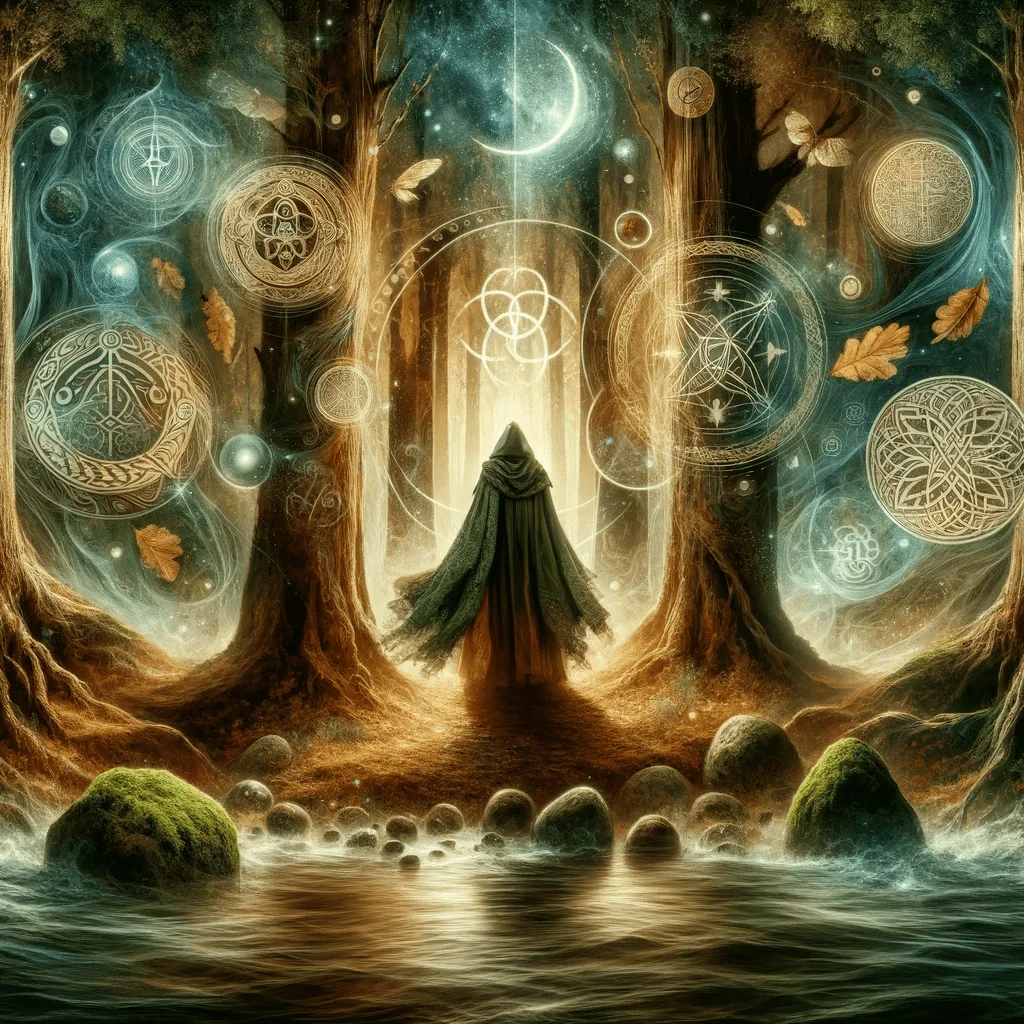Druidism

Druidism, also known as Druidry, is a spiritual or religious movement that generally promotes harmony and worship of nature, and respect for all beings, including the environment. Its followers, known as Druids, often venerate the spirits of nature and the ancestors.
Druidry was the belief system of the Celtic social class in Britain and Gaul that held religious, legal, and educational roles. The earliest known records of the Druids come from the 3rd century BC. However, the origins of the movement are still somewhat unclear and subject to debate among scholars. There’s also a lot of speculation around their practices and beliefs due to the lack of written records from that period, as much of the ancient Druidic tradition was passed down orally.
Modern Druidry is thought to have emerged during the 17th century, gaining popularity in the 18th and 19th centuries during the period of Romanticism, and it has continued to develop and diversify through the 20th and into the 21st century. The modern movement is a form of Neopaganism, albeit one that lacks a clear doctrine or central authority.
The beliefs and practices of those who identify as Druids in the contemporary world can vary widely. Some follow a monotheistic faith system (often worshipping a single deity, usually the Earth Mother), while others may be polytheistic, animistic, or pantheistic. Modern Druids often celebrate the eight festivals of the Wheel of the Year (the solstices, equinoxes, and cross-quarter days), respect and venerate the natural world, and some engage in forms of divination or magic.
Some modern Druids practice divination and magic, though the precise form and meaning of these practices can vary widely.
- Divination: Divination refers to practices used to gain insight or predict future events through various methods. Within Druidism, various methods might be used, such as:
- Ogham: This is an early medieval alphabet used primarily to write the early Irish language. Some Druids use Ogham for divination or meditation, similar to how one might use tarot cards or runes.
- Tarot or Oracle cards: These cards are used to gain insight into the past, present or future by posing a question to the deck, then drawing and interpreting cards.
- Nature Signs and Omens: Some Druids practice divination by observing natural events, like the flight of birds or the patterns of weather.
- Magic: In the context of Druidry, “magic” doesn’t refer to the fantastical powers often seen in media and literature, but more to the idea of causing change in conformity with will, as defined by occultist Aleister Crowley. It’s often associated with spiritual or inner changes, rather than attempts to control the external world.
- Spellcraft: Some Druids may practice a form of spellcraft, often involving the use of symbolism, ritual, and intention to bring about personal change. This might involve the use of symbolic tools, invocations, and the creation of talismans or amulets.
- Ritual Magic: Many Druids engage in ritual practices, which can range from simple daily activities to more elaborate ceremonies, such as those performed at the solstices or equinoxes. These rituals often aim to align the practitioner with natural forces and cycles, to foster a sense of connection with nature and the divine.
- Healing: Some Druids engage in practices aimed at promoting healing, either physical or emotional. This might involve various forms of energy work, herbalism, or the use of crystals.
Remember that Druidry is a very individualistic and diverse path, so not all Druids will practice divination or magic, and those who do may practice them in very different ways. These practices are not mandatory parts of Druidry but are optional elements that some individuals choose to incorporate into their personal spiritual practice.
Several excellent books provide insights into Druidism, both its historical origins and its modern forms. Some popular titles include:
- “The Druidry Handbook: Spiritual Practice Rooted in the Living Earth” by John Michael Greer: This book serves as a comprehensive guide to modern Druidry, presenting it as a viable choice for seekers exploring the spiritual side of life. Greer explains the philosophy of Druidry and provides practical information on how to integrate it into daily life. The book covers ritual, meditation, connecting with nature, and using symbolism.
- “The Path of Druidry: Walking the Ancient Green Way” by Penny Billington: This book provides an exploration of the Celtic and Druidic mysteries through a series of practical exercises and guided meditations. It’s structured around the symbolism of the sacred tree and includes a comprehensive look at core Druidic practices including celebration of the seasonal festivals, working with the ancestors, and divination.
- “Blood and Mistletoe: The History of the Druids in Britain” by Ronald Hutton: Hutton, a well-respected historian, presents a comprehensive history of the Druids in Britain. The book covers everything from the ancient Druids mentioned by Greek and Roman authors to the revivals of Druidry in modern times. This is an excellent book for those interested in the historical aspects of Druidry.
- “Bonewits’s Essential Guide to Druidism” by Isaac Bonewits: A guide to Druidry by a prominent member of the American Druid community. The book covers the history, beliefs, and practices of Druidry, and also includes a critical analysis of the different strands of the modern Druid movement.
- “The Book of Druidry” by Ross Nichols: Nichols, a figure central to the 20th-century revival of Druidry, provides an in-depth look at the history, folklore, spirituality, and mythology of the Druid path. He also presents a vision for how Druidry can help address environmental and societal challenges.
It’s important to note that Druidry is less a doctrine of faith and more a set of spiritual practices and philosophies, with much left to personal interpretation and experience. Thus, individuals can approach and practice Druidry from many different perspectives.


